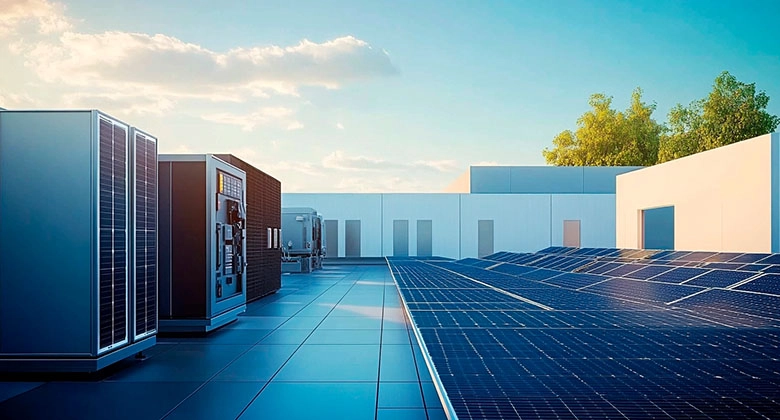

The path to energy independence begins today
In recent years, Ukraine has become increasingly attentive to energy efficiency. This is especially true for office centers, where stable power supply is the key to uninterrupted operations and peace of mind for business owners. When considering long-term investments, many company executives ask themselves how justified a switch to solar energy truly is. If such decisions once seemed out of reach, today the situation is changing before our very eyes.
Take a look at modern office buildings in Kyiv, where sunlight is reflected not only from glass facades but also from neatly arranged solar panels. Here, businesses are already actively using an affordable solar power plant in Kyiv for office buildings—a solution that is gaining popularity among business center owners. This is hardly surprising: tariff regulation and the dynamic rise in electricity prices are literally pushing businesses to seek alternative sources of energy.
Why tariffs play a decisive role
Tariff regulation in Ukraine is constantly evolving. Every year brings new rules and adjustments that directly impact property owners’ calculations. It’s no secret that traditional electricity is becoming more expensive. For businesses, this means not only additional costs but also a certain level of uncertainty, which management companies always try to avoid.
Solar energy offers transparency and the ability to plan budgets years in advance. Of course, before installing any equipment, it’s important to understand how tariffs are formed, what to pay attention to, and when investments will pay off.
Return on investment: real-world examples
Volodymyr, the owner of a large business center in Zhytomyr, decided to install a solar power plant just a year ago. His initial concerns—how quickly the investment would pay off—disappeared after only six months of operation. Thanks to smart planning and professional installation, his electricity expenses were almost cut in half.
On average, the payback period for projects in major Ukrainian cities is now about 3 to 5 years. This figure may vary depending on the building’s size, the number of panels installed, and of course, tariff trends.
One crucial point is choosing the right plant capacity. In most cases, a 30 kW turnkey solar power plant and price in Zhytomyr is an optimal solution for an office building, covering a significant share of the business’s energy needs. Such a project does require upfront investment, but savings become evident from the very first months of operation.
Comparing benefits: solar power plants vs. traditional energy
Let’s consider a typical office center with 200 workspaces. Its monthly electricity costs, without its own generation, can easily exceed the budget allocated for other important needs—from equipment maintenance to utility payments.
The advantages of solar energy for offices are obvious:
- Stable tariffs and predictable costs.
- Reduced risk of power outages and interruptions.
- A company’s eco-friendly reputation and the opportunity to participate in “green” tenders.
- Increased market value of the property.
Example of investment return calculation
Suppose an office building in the city center invests in a 30 kW solar plant. Given the average electricity price and tariff regulation, annual savings may reach up to 40% of total energy expenses. In just three years, the investment is fully recouped, and from then on, it’s all net savings.
How to avoid mistakes when choosing capacity
Selecting the right capacity for a solar plant requires careful consideration. Bigger is not always better. It’s important to account for seasonal fluctuations, unique consumption patterns, and forecasts for future tariff changes.
A list of key steps for implementing a solar power plant in an office:
- Assess the building’s current and future energy consumption.
- Consult industry experts to determine the optimal plant size.
- Choose a reliable equipment supplier.
- Ensure professional installation and setup.
- Consider potential changes in tariff regulation.
Innovations and government initiatives
The government is actively supporting the transition to alternative energy, offering compensation programs and simplified permitting procedures. This makes the implementation process even more attractive for businesses.
Which plant to choose: comparing options
Some companies need compact solutions, while others require large-scale projects. In practice, many office buildings face the same question: which solar power plant to choose—5, 10, or 30 kW? The answer depends on office size, the number of consumers, and business goals. But regardless of the capacity you select, the investment will certainly pay off if you approach the project wisely.
Sustainable development—the key to success
Switching to solar energy isn’t just an investment in equipment; it’s an investment in your company’s future. A clear financial strategy, supported by smart decisions, helps you remain independent from sharp tariff fluctuations and build long-term development plans. At Dolya Solar Energy, you will always receive professional advice, a payback calculation, and high-quality equipment for your office.

